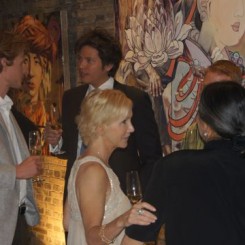CM: That leads to another question. How do you distinguish, in the Chinese context, between art and luxury goods? For instance, to what extent does corporate art investment fit within a particular class of commodity for the sake of portfolio diversity, and to what extent is it a matter of branding? Or is it simply just another luxury commodity, that is, a matter of desire and indulgence?
EdeB: Well, I think that, for various different corporations, originally it was purely the next obvious step in the mentality of greater importance, greater power, and greater purchasing power. Therefore you found individuals who bought in a way that I would say parallels Zhou Tiehhai, Ai Weiwei, and Zhang Huan, in the dialogue of “I have these cars outside. I have these expensive liquors. I have my assistant doing all of my work, because I am so famous and you should invest in me.” So I do believe that now, after about ten years of solidly Chinese Mainland investors buying, we can see it is because of this self-important show of having money. But now the corporate decisions have become more mellow, more mature and more sophisticated. We are seeing in corporate purchases more focus in the type of purchases. There is actually a personal taste, which is becoming more sophisticated, but at the same time more defined so that you don’t have copycat collections. A lot of Chinese collectors like to have the essential top five or ten top Chinese artists in their collections, which shows absolutely no variety and no diversity, nor any personal taste. For the last three to five years however, I have had the pleasure of seeing more diversity and a more sophisticated product, so therefore less of a luxury approach and more of a cultural approach.
